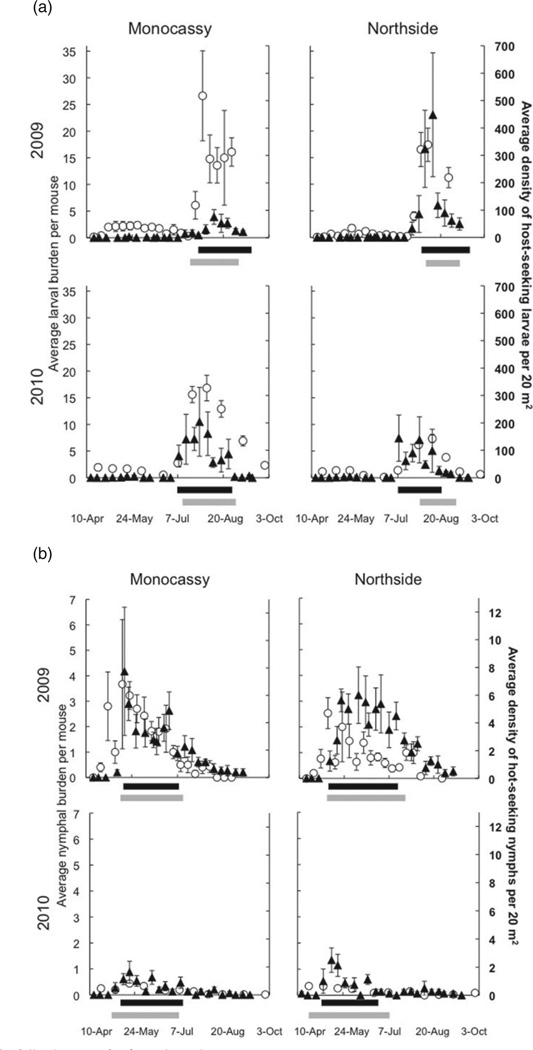Fig. 1.
Blacklegged ticks have highly seasonal activity patterns with densities varying between sites and between years. The activity period of both (A) larval and (B) nymphal ticks were strongly aggregated in time. The average densities of host-seeking ticks (closed triangles ± s.e.) and the average burdens on mice (open circles ± s.e.) vary between sites and between years. The densities of host-seeking nymphs (closed triangles ± s.e.) and the average nymphal burdens on mice (open circles ± s.e.) were drastically lower in 2010 than in 2009. The black bars denote the peak period of host-seeking ticks (ca. 80% of collected ticks) and the grey bars figure the peak period of attached ticks (ca. 80% of counted ticks).

